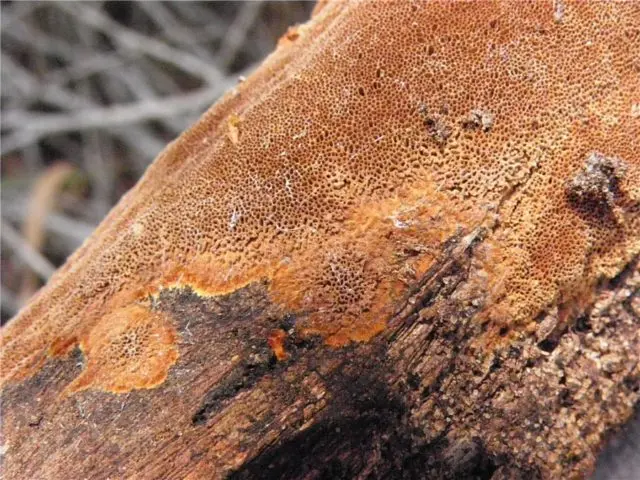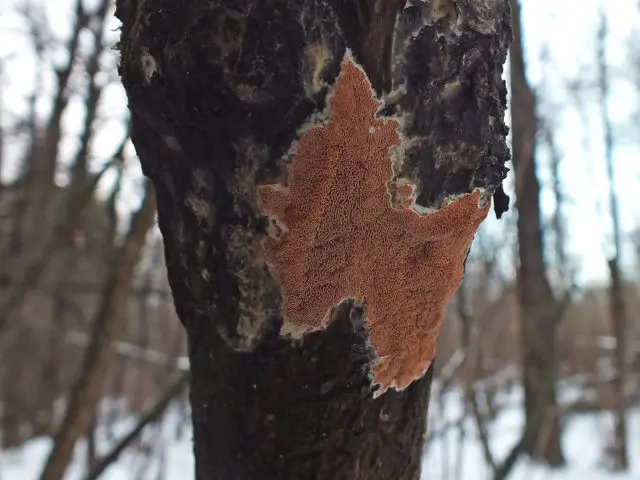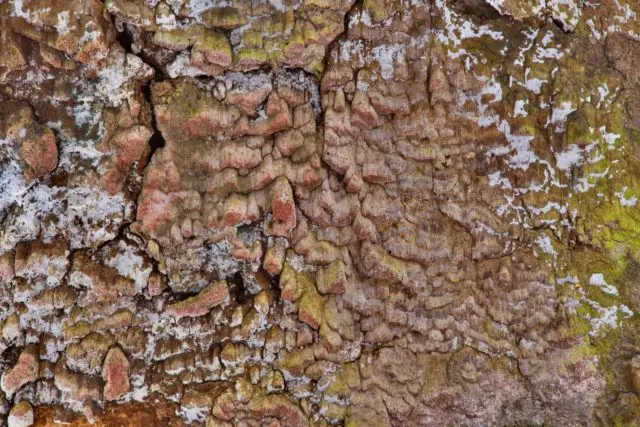Contents
Phellinus rusty-brown (Phellinus ferrugineofuscus) refers to tree-growing fruiting bodies, consisting only of a hat. Belongs to the Hymenochetal family and the genus Phellinus. Its other names:
- phellinidium russet;
- rusting tinder.

Outwardly, the fungus resembles a spongy sponge
Where does fellinus rusty-brown grow?
Distributed in the mountainous areas of Siberia, in old forests. In the European part of Our Country, the rusty-brown tinder fungus is quite rare. Occasionally found in Northern Europe. Prefers coniferous wood: fir, cedar, pine, spruce. Likes blueberry bushes, damp, shady places. It grows on fallen trees and standing dead trunks, on the bark and branches of dying trees. The mushroom is an annual, but in warm winters it can safely survive until spring.

Trutovik rusting, growing on a damaged trunk
What does fellinus rusty-brown look like?
The fruit body is prostrate, devoid of a stalk and tightly adjacent to the substrate. Only the rusty-brown tinder fungi that have appeared have the appearance of pubescent reddish balls, which quickly occupy a large area, merging with each other into a single organism. The edges do not have a spore-bearing layer, are sterile, white-gray or light beige, yellowish. Uneven, bumpy, characteristic felt texture. Color rusty brown, brick, dark chocolate, reddish, light ocher, carrot.
The hymenophore is finely porous, nostrilous, uneven, with a spore-bearing layer on the outside. The pulp is dense, leathery, elastic. When dried, it is woody and crumbly. The surface is satin-shiny. Tubes up to 1 cm long.

Old specimens may be covered with greenish-olive algae colonies.
Is it possible to eat fellinus rusty-brown
The mushroom is classified as an inedible species due to its extremely low nutritional value. There are no data on its toxicity.
Conclusion
Phellinus rusty-brown is an inedible parasitic fungus. Settling on wood of predominantly coniferous species, it causes yellow rot, as a result of which wood delamination occurs. Distributed in Siberia and the Urals, in the central part of Our Country it is very rare.









